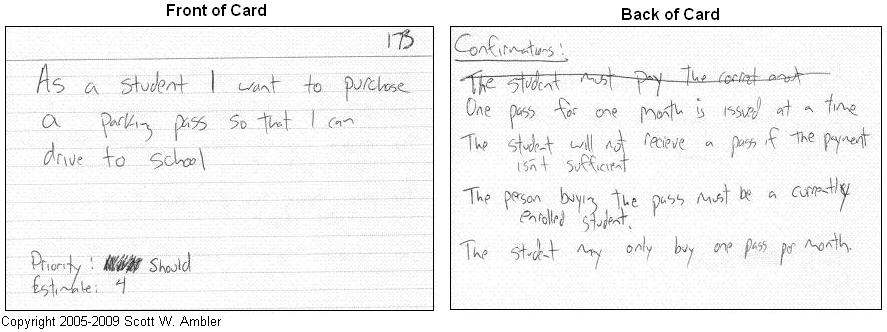User Stories, Story Cards & Task Lists
User Stories, Story Cards, and Task Lists are techniques commonly associated with agile development methods. They provide a low-tech, high-touch approach to capturing requirements and managing tasks.
User story
Key Features
- Low-Tech, High-Touch: Simple and easy-to-use methods that focus on user needs and functionality.
- Easily Updatable: Can be easily modified or expanded as requirements evolve.
- Portable: Often captured on story cards (index cards) that can be moved around or re-organized.
Components
User Stories
- Description: Short, simple descriptions of a feature or requirement from the user’s perspective.
- Example: “As a user, I want to be able to reset my password so that I can regain access if I forget it.”
Story Cards
- Description: Physical cards used to document user stories, which can be moved and prioritized easily.
Task Lists
- Description: Lists of specific tasks needed to implement user stories or features.
Benefits
- Captures Functional and Nonfunctional Requirements: Provides a comprehensive view of both types of requirements.
- Flexibility: Adaptable to changes and iterative development.
Detailed Process
-
Capture Requirements Using Story Cards
- File Card: Each card documents a single requirement.
- Discussion: Each requirement (card) is discussed to determine:
- The effort required to implement it.
- The creation of a task list for each requirement (story).
- The splitting of large requirements into smaller, manageable sections.
- Prioritization of the story by risk level and importance.
-
Task List Creation
- Develop a task list for each user story to outline the steps needed for implementation.
- Break down large stories into smaller, actionable tasks.
-
Prioritization
- Assess requirements based on their risk level and importance.
- Prioritize tasks and stories to focus on critical features and functionalities first.
By using user stories, story cards, and task lists, teams can manage and prioritize requirements effectively, ensuring that both functional and nonfunctional needs are addressed in a flexible and iterative manner.
